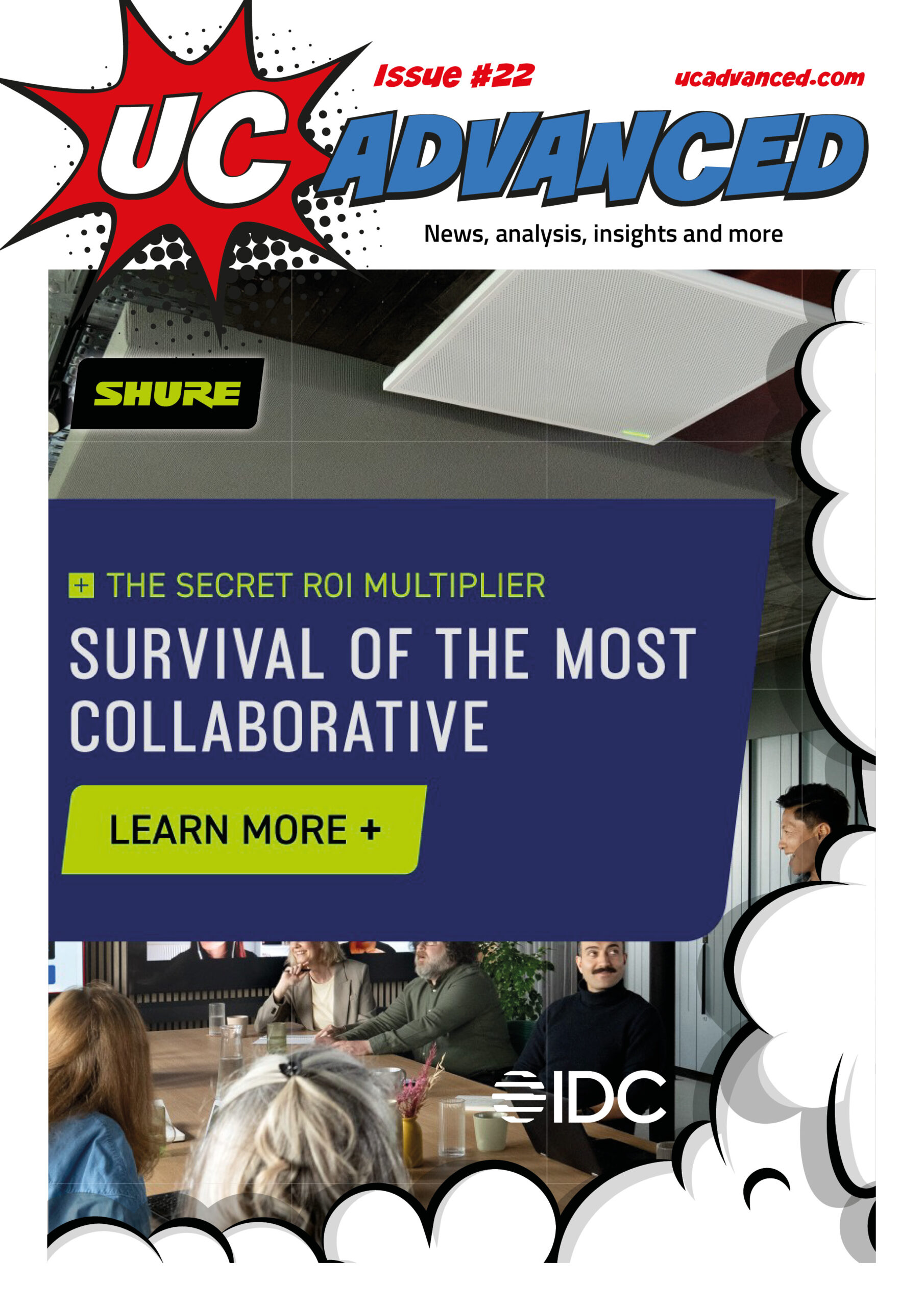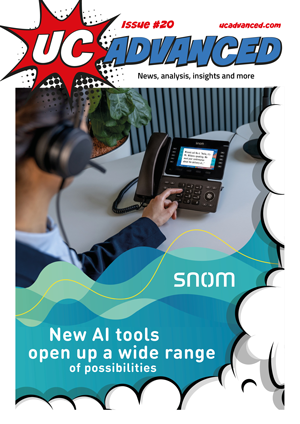2024 is past. What can we learn from it? And what do we expect from 2025? UC Advanced gathered some views from well respected business leaders across the channel.
Chris Angus, VP for Contact Centre Engagement, 8×8:
“We welcome the Government’s AI Opportunities Action Plan, this is a very positive step for the UK. This initiative not only promises to supercharge skills and future-proof our economy, but it also has the potential to revolutionise customer service across multiple sectors, delivering not only faster, but smarter and more efficient experiences.
“While there are lingering concerns about potential job losses due to AI, our industry experience is clear: within customer experience, AI works best when it complements human efforts. In this era, where AI technologies require training alongside humans, it’s crucial for AI to function as a support rather than a replacement. AI can advise staff on optimal customer interactions and solutions, enhancing the human touch to deliver top-notch customer services.
“AI is also transforming the contact centre landscape by making jobs more rewarding for front-line staff. We’ve seen that when AI handles routine questions like “how do I pay a bill? What are your opening hours?”, this means employees are freed up to focus on more engaging tasks and trickier, more in-depth customer issues. This shift not only improves job satisfaction but also frees up time for staff to participate in upskilling and training programmes, ensuring the UK remains at the forefront of technological advancement.”
“We warmly welcome this investment in AI, not just for its promise of improving skills, but also for its potential to elevate customer service across industries.”
Steve Rafferty, Head of EMEA, Zoom:
Hybrid Work and Equity in the Workplace
By 2025, investment in reliable, high-performance technology and AI-driven collaboration tools will create more inclusive, flexible environments. Businesses will increasingly adopt hybrid work models, giving employees the autonomy to choose where and when they work. This shift will be supported by AI-driven tools that enable seamless communication and collaboration across remote and in-office teams. These tools will not only enhance productivity but also increase equity by ensuring that employees, no matter where they are, feel equally involved in collaborative efforts
AI-Natives and Human-Centric Leadership
The rise of AI-native employees, those accustomed to integrating AI into daily life, will push businesses to fully embrace AI tools, reshaping workplace expectations. At the same time, leaders must prioritise human-centric qualities like empathy, creativity, and ethical judgement to complement AI’s capabilities and build trust in the evolving workplace.
Use of AI will set businesses apart
The use of AI will set organisations apart by enabling them to deliver highly personalised experiences and ensure seamless and holistic engagement. By harnessing AI to analyse customer data in real-time, businesses can tailor offerings and communications, driving greater loyalty and retention. Additionally, AI-powered feedback loops will allow companies to continuously refine their services by quickly adapting to customer sentiments, helping them stay ahead of the competition and meet rising consumer expectations across all touchpoints.
Mary Jacques, Executive Director, Global ESG and Regulatory Compliance, Lenovo
“With e-waste generation outpacing the rise in formal recycling by a factor of almost 5, enabling increased repair, refurbishment and recycling of electronics will become critical for achieving net-zero goals and addressing raw material scarcity. In 2025, businesses will increasingly seek devices designed for longevity and maximum upgradeability, driving a stronger shift toward a more circular economy and sustainability in the tech industry.
Energy-efficient hardware and extended software support aim to further mitigate environmental impact. Repairable designs with accessible instructions and simplified disassembly will become more widespread, alongside take-back programs for material recovery and reuse.”
Rob Smith, Senior Director, Strategic Market Development, Shure
The modern workplace is in constant flux, requiring organizations to adopt new tools and technologies to maintain culture, meet productivity goals, and support evolving workforce needs. From innovative office designs and flexible work arrangements to cutting-edge digital tools and AI, the landscape of work and collaboration is set to transform remarkably.
Office design will shift to meet the needs of hybrid work, transforming traditional spaces into technology-enhanced collaboration and learning hubs. Companies must ensure that in-person and hybrid experiences rival the convenience and user-friendliness of home setups, prioritizing intuitive, high-quality tech tools for seamless connectivity. Importantly, achieving meeting equity for both remote and in-person attendees will be crucial. This involves ensuring that remote participants have the same ability to contribute and engage as those physically present, using technologies that provide crystal-clear audio, high-resolution video, and interactive capabilities to bridge the gap.
Flexibility remains critical, with companies striving to create zero-friction collaboration experiences. Streamlining and standardization, while continuing to support multiple platforms will be essential for businesses planning investments in 2025 and beyond.
As we look ahead, wide-ranging adoption of advanced collaboration solutions is on the horizon, with platforms like Microsoft Teams and Zoom evolving to offer more seamless transitions between video conferencing, chat, file sharing, and project management. Integration across these platforms will enable employees and clients to communicate more effectively, regardless of platform preference.
The growing use of AI will be a driving force, boosting productivity by streamlining communication, automating routine tasks, and enabling personalized follow-ups and task management. AI’s role in physical meeting spaces will also grow, with transcription and meeting summaries, identification of individual attendees in the room and corresponding note-taking, as well as automation of in-room experiences. However, performance of AI tools in a meeting room context will depend on designing effective spaces equipped with advanced audio and video solutions to enable AI to fully interact with the physical world.
Manon Dave, AI visionary and engineer
In 2025, the convergence of advanced AI technologies will redefine personalisation, delivering tailored assistance that aligns with individual needs and lifestyles. Far beyond generic AI systems, these companions will become deeply ingrained in our routines, mastering tasks like work management, health monitoring, and home automation.
Privacy will emerge as a defining feature, with many systems adopting private cloud architectures to give users unparalleled control over their data. This evolution will sharply distinguish these secure, user-centric solutions from centralised corporate AI systems, signalling a paradigm shift in the AI landscape.”-
Ralf Jordan, Vice President Channel EMEA at Lenovo
The channel landscape is undergoing significant change and in 2025 both hybrid and multi-cloud will open up unprecedented opportunities for resellers, offering everything from platform to infrastructure and end-user services. They are reshaping IT modernisation and disrupting traditional reseller roles.
As cloud services expand, resellers are shifting from product sales to managing cloud infrastructure and digital transformation projects. The multi-cloud trend, originating in large enterprises, is now penetrating SMEs, offering opportunities across platforms, infrastructure, and services. This evolution positions multi-cloud as a dominant strategy for businesses of all sizes.
Channel partners are already keen to ride the wave of AI, but turning ambition into fruition is what will really matter in 2025. IT vendors need to access state of the art AI solutions, allowing customers to deploy AI faster, safely, and more efficiently. Key to this is providing access to a partner ecosystem, including AI Independent Software Vendors (ISVs), across various applications and services. Partnerships will be crucial here. One of the major roadblocks to wider AI adoption is the fact that even if companies buy the best software or hardware, there can still be issues harnessing the technology and ensuring employees have the right skills to maximise their AI investments. It is crucial that IT vendors have initiatives in place to combat these challenges.
Andrew Chang, Technology Director, S&P Global Ratings
We maintain a positive long-term view of the technology industry. Industries from health care to energy will increase their investments in IT, and AI in particular, to increase sales, hasten R&D, and achieve operational efficiency.
Key Takeaways from the S&P Global Ratings Technology Industry Credit Outlook:
- Global IT Spending: Expected to grow 9% in 2025, driven by AI spurring massive data center spending and traditional hardware investments.
- Software & IT Services: Steady growth; semiconductors to see double-digit growth due to AI.
- U.S. Tariffs: Potential risk to IT consumption, especially for consumer-focused and enterprise hardware.
- Diversification: The tech industry is diversifying its supply chain but is still heavily dependent on China.
2025 Outlook:
- GDP Growth: Global 3.0%, U.S. approx. 2.0%, Eurozone 1.2%, China 4.1%.
- Hyperscalers: Continued strong revenue growth well above 20%, supported by gradual monetization of AI investments.
- Software: Modest grow acceleration to 10%, driven by digital transformation and AI integration.
- Hardware: Material improvement in 2025 as enterprises transition to the cloud and ramp up their investments in GenAI projects.
- Semiconductors: Will outgrow the overall IT industry again, at near 12% growth, due to AI compute adoption and a rebound in non-AI-related demand.
- Network Equipment: Projected 7% revenue growth after a downturn in 2024.
- Mobile Telecom Equipment: Modest growth expected after declines in 2023 and 2024.
- Storage: Gradual recovery with 4% revenue growth.
- PCs & Smartphones: Shipments to grow 2%-3%, but industry revenues should be higher given a gradual infusion of AI-enabled devices.
- Servers: Shipments to grow 4%, with revenues rising 10%-20%.
The Bottom Line: Despite geopolitical uncertainties, the tech sector is poised for robust growth, with AI and cloud services leading the charge.
- Positive Long-Term View: We maintain a positive long-term view of the technology industry and believe the sector to become less cyclical, with increasing investments across industries.
- AI & Cloud: Key drivers of growth, with as-a-service spending becoming more prevalent.
Yousee is UC Advanced’s resident future gazer. Yousee’s thoughts:
| On the rise | On the decline |
| More company spend on AI | The cost of adopting AI should ease |
| AI disruption will affect Cybersecurity, Customer Service and CX | A fixed date for a UK AI act. There is no UK framework for responsible AI development and use (there is an EU AI act) |
| Advanced AI assistants with natural language processing improvements and human-like interactions | Working in silos. Companies are making extra efforts to ensure employee equipment is provided for connecting and engaging |
| Organisations will consume more power, and therefore spend more on it | Renewable energy costs, both implementation and provision, will continue to decline |
| Security continues to be a hot topic – firmware and software | Windows 10 end of life on 14 October 2025 |
| Companies and employees will continue to grapple with optimum hybrid working conditions | Monday to Friday 9 to 5. Whilst employees are asked to return to the office, they’re gaining ground on flexible working times |
| Chatbots | Operational costs, if chatbots are implemented correctly |
| More automation, especially in warehousing, and household devices | Warehouse inefficiencies |
| 5G infrastructure developments delivering faster speeds | Latency |
| Health-monitoring wearable devices | Mental well-being, if we keep checking our smart wearable devices too often |
| 1 April 2025: Microsoft is expected to increase the price of Microsoft 365 by 5% | 1 February 2025: Microsoft is expected to decrease prices for commercial cloud services by 5%, depending on what customers have installed |
| Firewall as a service (FWaaS) market is expected to grow. VPN sales are increasing due to work from anywhere lifestyles | Sales of physical firewalls. Companies using VPNs are shifting towards Zero Trust models |
| More channel focus on software and services | Software providers finding less opportunity to enter an increasingly saturated market |
Disclaimer: All Yousee’s forward-looking views are her own, for purposes of interest, and should not be relied upon for any other use












